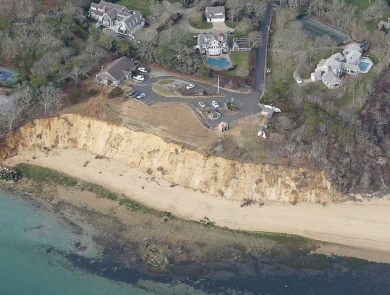Facility
Location
3888 State Route 101
Ilwaco, WA 98624
United States
Volunteer Position Overview
About This Position
Goal: To assist the biology, visitor services, and maintenance teams at Willapa National Wildlife Refuge Complex by performing a variety of tasks that improve habitat for wildlife and/or welcome visitors ensuring they have a safe and enjoyable experience on their public lands.
Duties:
The volunteer may perform any of the following tasks:
- Biology
- Work with refuge staff and volunteers on restoration projects to conserve our refuge resources which may include planting trees, shrubs, flowers, and other landscape/habitat-oriented tasks that restore habitat
- Remove invasive plants using hand tools
- Assist with citizen science projects including Project NestWatch, Waterbird Surveys, Salmon Surveys, and more. Follow established protocol for each program
- Assist refuge with invasive European green crab trapping in Willapa Bay
- Maintenance
- Hike nature trails and remove branches from overhanging trees and shrubs using hand tools
- Clean-up limbs and debris from trails and road following storm events
- Weed whip, mow, and trim vegetation along refuge facilities including trails and parking areas using approved equipment
- Empty trash cans, pick up trash along trails, in parking areas and around other public use facilities
- Assist with maintenance of refuge facilities. This may include buildings, kiosks, hunting blinds, gates, and vehicles. Typical items include minor repairs, painting, and cleaning/washing
- Serve as a regular presence at Cutthroat Creek. This includes speaking with visitors and answering their refuge related questions, assist with maintaining refuge trails and keeping them clean, ensure brochures and port-a-potty are stocked
-
- Visitor Services
- Assist the refuge with set up, take down and hosting at special events such as National Wildlife Refuge Week, trips to Long Island, Wings Over Willapa, Nature Play Days and more
- Host a table at public events representing the Willapa NWRC, could include Eagle Days, Farmer’s markets, etc.
- Assist the refuge with its environmental education program, Refuge Explorers, especially during field trips
- Hike refuge trails or spend time at refuge trailheads and speak with visitors to explain the purpose of the refuge, answer their refuge-related questions, identify wildlife and provide information on the wildlife, habitats, and public use opportunities of the refuge
- Restock brochures, clean signs, etc.
- Take photographs for refuge habitat and/or wildlife as requested for use on the refuge website and/or social media account
- Help protect natural resources and ensure visitor safety by informing visitors of potential safety hazards, reporting safety hazards and instances of lawbreaking to the Refuge Law Enforcement Officer, and attempting to correct minor infractions through interpretation. Volunteers shall not engage in law enforcement actions
- Report volunteer hours to appropriate Refuge staff monthly
Physical Environment(s) will work on uneven terrain and will be required to walk up/down various elevation gains. Bending over and reaching overhead will be part of normal activities. Daytime temperatures range between 45 to 75 degrees in the summer and 30 to 55 in the winter. There will occasionally be exposure to direct sun, wind, and rain, without shelter.
Qualifications:
- Be at least 18 years old, possess a valid driver’s license, and complete an online Defense Driving course to operate a government vehicle
- Be willing to wear U.S. Fish and Wildlife Service volunteer uniform components which can include a volunteer shirt/vest/or hat and present a positive image of the U.S. Fish and Wildlife Service
- Provide own transportation to and from the job site
- Enjoy meeting and working with people of all ages and backgrounds
- Must have patience and tact and able to represent the U.S. Fish and Wildlife Service in a professional manner. Ability to work effectively with people with various perspectives and temperaments is vital
- Ability to understand the purpose of the refuge, its wildlife and visitor services programs, the National Wildlife Refuge System and the location of the refuge lands
- A desire to treat volunteer service as a serious responsibility
- Ability to do moderately strenuous, physically demanding jobs for long periods of time such as mowing or weed whipping
Time Commitment:
In exchange for a RV hook-up free of charge, volunteers are required to commit to 80 hours of volunteer service monthly. Couples can work together, but the 80-hour commitment pertains to each volunteer, not collectively as a team. Position is available year-round. Preferred candidates will commit to 6 months or longer.
Housing:
- The refuge will provide a gravel pad, picnic table, and 50-amp power for an RV/motorhome at Cutthroat Creek. This is a unit of Willapa National Wildlife Refuge located on the east side of Willapa Bay along U.S. Highway 101
- The volunteer must provide a fully self-contained motorhome
- The site does not contain water or sewer, there are state park locations on the Long Beach that have dump stations and water filling opportunities
- Pets are not allowed
- There is no wi-fi at this site but there is good cell reception
Training:
When needed volunteers will complete safety training provided by refuge staff and review all necessary materials including Job Hazard Assessments for individual tasks as needed.
Duties/Activities
Stories About Volunteering
Other Ways to Work with Us
Are you looking for something different than a volunteer opportunity? The Fish and Wildlife Service employs around 9,000 people nationwide and offers great internship opportunities every year.






